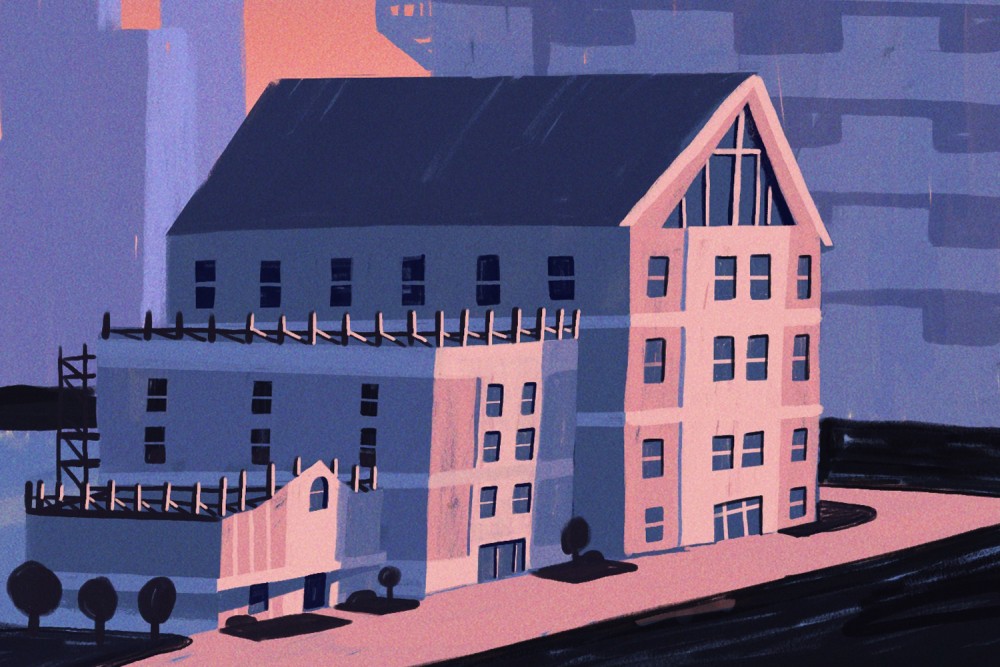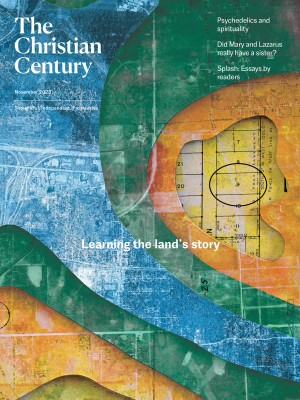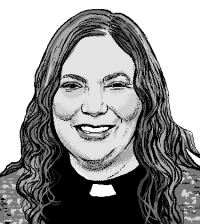My Pentecostal kin
In my Argentine in-laws’ neighborhoods, there are Protestant churches on every corner. They aren’t mainline.

(Illustration by Jamiel Law)
Cielos Abiertos Huerta de Adonai, Aguas Cristalinas, Ríos de Salvación, Estrella de Amor, Centro de Fuego Santo, Casa de Avivamiento. Churches are popping up like mushrooms in the dirt-poor neighborhoods where my Argentine in-laws live. They are Pentecostal, a group absent—whether by choice or by lack of invitation—from almost every ecumenical group in which I have participated. There was a Pentecostal church next door to the Lutheran church I served in the Bronx, but I never managed much of a relationship with my neighbor. One reason was scheduling. The pastor worked a secular job during the day in order to support the ministry he did at night and on Sundays. When was there time to grab a café con leche with a colleague?
Not all of our differences were calendar related. I reached out to him about joining in local organizing efforts. He declined, explaining that the world belonged to the devil and there was not much point in trying to fix anything. His focus was on setting people up for the life to come. I judged this to be defective theology. He likely thought the same of mine.
Read our latest issue or browse back issues.
But after a major snowstorm—when I’d struggled through the snow on my way to church, worrying about how I would even get inside—my neighbor was there with his snowblower, clearing the sidewalk for me. The world may belong to the devil, but the sidewalks bore a fine dusting of love.
Most of my family members have become dedicated Pentecostals. When I met them, most of them identified as Roman Catholic, active or inactive. Gregorio had been inactive until he joined the nascent base community where we met, in a squatters’ area on the outskirts of Buenos Aires. We studied the Bible, worshiped, and worked for land rights, electricity, and water, all now achieved. We sorted piles of sample medications for those in need. The samples appeared weekly in large garbage bags, I know not how.
Ironically, it was through these communities which turned church hierarchies upside down that I came to realize how important the reigning church hierarchy could be. As Rome became more conservative, so did the cardinals, bishops, and priests. In my experience, the base communities thrived with support from a few radical priests. This changed as those priests were reassigned, died, or worse. At least one supportive bishop was assassinated because of involvement with these communities and the social justice issues they embraced.
When I visited a decade later, I found a growing disenchantment within these communities. Large-scale social transformation had not occurred. The dictatorship was replaced, but the economy remained abysmal. Liberation theology felt to many like a lost cause, so the timing was perfect for a new model. When I was first in Argentina, Pentecostal churches were few and far between. Decades later, they are everywhere. (In Washington Bullets, Vijay Prashad offers credible evidence that the CIA supported this shift.)
Like the base communities, the Pentecostal church is present where the most marginalized people are. I know there are mainline churches in Argentina, but I’ve never seen one in the poor areas I’ve spent time in, where there is now a Pentecostal church on almost every corner. Anyone with basic construction skills can build a simple gathering place. The churches begin with a ground-floor space and build more floors as they can afford to. Rebar sticking up on top of churches is as commonplace as crosses, pointing toward hope.
Along with easy access, these churches offer ample opportunities for people to engage deeply. Even very small churches will have multiple departamentos—for women, men, youth, children, evangelism, outings, food, and more. There is a continuous offering of events, outings, meals, studies, and retreats. My family members were excited to describe the important roles they play. The priesthood of all believers flourishes, in part because the pastors have full-time jobs elsewhere.
What impressed me the most were the mini miracles. Thanks to the intensive attentions of the church, including in the realm of spirits and exorcisms, the philanderer was now a model husband and father. The alcoholic was sober and could hold down a job. The drug-addled teen was a positive leader among their peers. Neighbors noticed these powerful transformations; they were a highly effective form of evangelism. Names for local enterprises were testimonies to the salvation that allowed a person to rise up, pick up their mat, and start a business. You could get your transmission fixed at the Miracle of Joy Garage or pick up dinner at Promised Land Empanadas.
The mission of these churches included an impact on earth as in heaven, but these transformations focused on individuals. Even when the churches were a block apart, they did not tend to work together for the common good of the neighborhood. For example, the government was not picking up garbage in poor areas. People resorted to burning it, creating a serious health hazard. The churches could have joined to pressure the city for sanitation services, but this simply was not something they had any interest in doing.
Nor do genderqueer and transgender people have any place in the Pentecostal churches I observed. My daughter, her wife, and their two young girls are received with love by most family members, but when pressed these relatives admit that this nontraditional family would not be accepted in any of their churches, other than to save them from their sin, including exorcism of the evil spirits of homosexuality. Bad theology kills, and I’ve been to the funerals. Nonetheless, there is much that is life-giving to learn from our Pentecostal neighbors to the south, or even around the corner.







